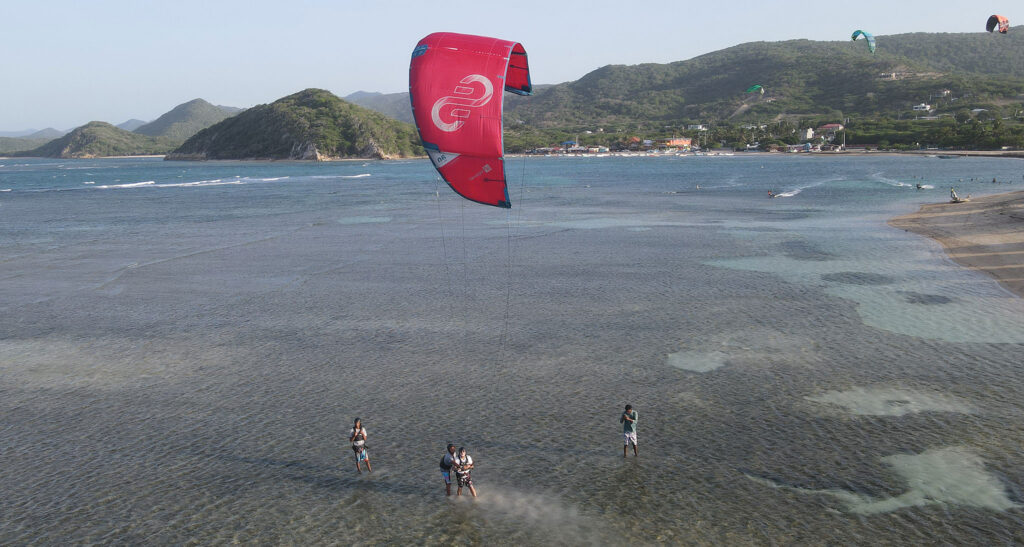When is the windy season in Buen Hombre, Dominican Republic?
Buen Hombre is blessed with consistent wind most of the year, but not all of the year. A couple of months weeks can pass without conditions suitable for kitesurfing. This is primarily late September and most of October. This corresponds with when rain could occur in the otherwise dry region of Montecristi.

When is the the best time to kitesurf in Buen Hombre?
The strongest wind starts in at the end of December or January. In theory it peaks in February or March, however we usually see it stay very strong way into the summer and beyond. Officially the peak season is the summer moths of June, July and August. In real life the good season is much much longer but those are the more “busy” months when kiters from Europe go on summer holiday, hence high season.
Keeping that in mind you should be setup for kiting all day, every day in Buen Hombre. But do check the wind forecast before you come to be on the safe side.
What you’ll read in this article is based on both historical weather data and real life observations from years of kitsurfers all of the year in Buen Hombre.

What kite should I bring to kitesurf in Buen Hombre?
The wind here is stronger and more steady than Cabarete so you can do well with just one or possibly two kites. Depending on your weight, skill and style of kitesurfing a male kiter would use 8m up to 10m kites. A lighter female would use a 7m up to 9-10m. In general the smaller sizes would make more sense here. So take your small kite if you only pack one.
If you need a larger kite for a day they are available for rent from one of the two local kiteschools, Kite Buen Hombre or Friendly Kiteschool Buen Hombre . The famous flat-water means you don’t need as much wind to get going as you would pushing into chop or waves in other spots.
Why is it more windy in Buen Hombre than in Cabarete?
The kitespot in Buen Hombre sits out at a point where the wind comes in clean. Cabarete sits inside a bay with land east, exactly where the tradewinds come from. This explains why Cabarete is without wind in the morning and needs the wind to get more thermic acceleration as the day heats up and “bends” the tradewind a bit towards land and and into the bay. The result is more gust as wind comes over land causing some turbulence. Buen Hombre does not suffer this as the wind comes in directly from the sea not touching land on it’s way.
Thermic effect is stronger further west:

Buen Hombre is the kite-spot to the very left in this map. Notice the nice strong yellow colour. Cabarete to the right with a few knots weaker wind. This wind-map show how the continent of the Dominican Republic draws the wind in from the sea towards land as temperature increases daytime. This is the thermic effect caused by increased temperature-contrast between sea and land.
Mountains and coastal hills push and accelerate the wind:
The wind at the North coast of the Domincian Republic has it’s origin in the tradewinds created by the rotation of the earth and the “friction” caused between land and atmosphere. This winds blow year around along the equator. The continent of South America pushes this wind slightly north into the Caribbean.
The landmass of the Dominican Republic stretches from west to east. The chain of mouintains called “Coridillera Septentrional”, that extends from Montecristi in the west to Nagua in the east, “guides” the wind along the coast where it will accelerate due to the higher pressure caused by the hills and mountains that “block” it from passing over land and into the center of the island. This effects if felt stronger further west hence the stronger wind in Buen Hombre.


Another local effect in Buen Hombre is caused by the hills located upwind. These hills go all the way down to the sea. They slightly “bend” and accelerate the wind as it comes from the east. The International kiteboarders organization IKO refer to this effect as the “bay effect”.


